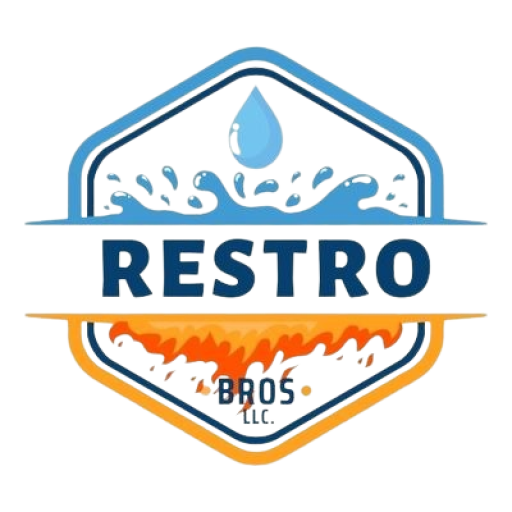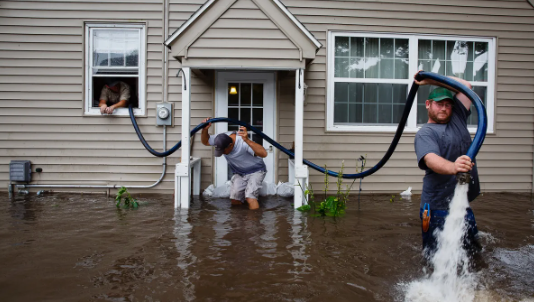Floods bring many challenges, from property damage to potential health risks. Whether caused by heavy rainfall, broken pipes, or rising waters, floods can contaminate your home and environment with harmful substances. It’s crucial to understand the health risks involved in flood cleanup so you can take the necessary precautions to protect yourself and your family. In this article, we’ll discuss the health risks associated with flood cleanup and how to prevent them.
Common Health Risks During Flood Cleanup
Floodwaters are often filled with bacteria, viruses, and other harmful contaminants. When cleaning up after a flood, you may be exposed to various health hazards. Below are the most common risks:
1. Bacterial Infections
Floodwaters can contain harmful bacteria like E. coli, Salmonella, and Campylobacter, which are often present in sewage and contaminated water. These bacteria can cause gastrointestinal issues, skin infections, and other serious illnesses. Cleaning up flood-damaged areas, especially with direct contact with water or contaminated surfaces, can increase the risk of bacterial infections.
2. Mold and Mildew Exposure
Mold begins to grow within 24 to 48 hours in damp environments, and flood-damaged homes create ideal conditions for mold growth. Mold can cause a variety of health problems, including respiratory issues, allergic reactions, and asthma exacerbation. People with weakened immune systems, young children, and the elderly are at a higher risk of mold-related health issues.
3. Chemical Exposure
Floods can displace chemicals and hazardous substances into the environment. Whether from nearby industrial sites, household products, or flooded vehicles, chemicals like pesticides, heavy metals, and oils can contaminate the floodwaters. Exposure to these chemicals can lead to poisoning, skin irritation, headaches, dizziness, and long-term health problems.
4. Sewage Contamination
If floodwaters enter sewer systems or nearby septic tanks, they can carry harmful pathogens from human waste. Exposure to sewage-contaminated water can result in diseases like hepatitis A, cholera, and dysentery. The risk is particularly high if the flood affected your basement or living spaces, where sewage might seep through drains or toilets.
5. Cuts and Scrapes
While cleaning up after a flood, you might encounter debris like broken glass, metal, or sharp objects. Cuts and scrapes from these materials can lead to infections, especially if you don’t clean the wound properly or if it comes into contact with contaminated water.
6. Respiratory Issues from Dust and Mold Spores
When you begin cleaning up the water, dust, and mold spores may become airborne. Inhaling these particles can cause respiratory distress, coughing, and lung irritation. Long-term exposure to mold spores can even lead to chronic lung conditions, especially for those with pre-existing respiratory problems.
Safety Precautions to Minimize Health Risks
Knowing the health risks associated with flood cleanup is essential, but it’s equally important to take steps to protect yourself during the process. Below are essential safety precautions:
1. Wear Protective Gear
When dealing with floodwater, always wear proper protective gear, including:
- Rubber boots: To avoid direct contact with contaminated water.
- Gloves: Rubber gloves can protect your hands from bacteria, mold, and sharp objects.
- Face mask: A mask, particularly an N95 respirator, can help protect you from inhaling dust, mold spores, and harmful chemicals.
- Goggles: Wear protective eyewear to prevent water and debris from getting into your eyes.
2. Ensure Proper Ventilation
As flood cleanup progresses, mold spores, dust, and fumes may build up inside your home. To prevent respiratory issues, ensure the area is well-ventilated. Open windows, use fans, and if possible, use dehumidifiers to reduce moisture levels in the air.
3. Disinfect Surfaces Regularly
Clean and disinfect all surfaces that have been in contact with floodwater. Use a solution of bleach and water to kill bacteria and viruses. This is particularly important for areas like countertops, floors, and bathroom fixtures. Be sure to wear gloves and a mask while doing this to avoid direct contact with contaminants.
4. Handle Mold Carefully
Mold remediation should be done carefully to avoid exposure to spores. If you find mold in your home after flooding, consider hiring a professional mold remediation service to handle the cleanup. If you do choose to clean it yourself, wear protective gear like gloves, goggles, and an N95 mask, and ensure the area is well-ventilated.
5. Clean and Sanitize Personal Belongings
Flood-damaged clothing, linens, and furniture should be washed immediately. Wash clothes and bedding in hot water with a disinfecting detergent to kill bacteria and mold. For items that cannot be cleaned, such as certain types of upholstery or mattresses, you may need to discard them to prevent further contamination.
6. Avoid Direct Contact with Sewage
If floodwaters contain sewage, it’s crucial to avoid direct contact. If you come into contact with contaminated water, wash the affected area immediately with soap and clean water. Additionally, any water that has come into contact with sewage should be treated as hazardous waste, and professional cleanup should be considered.
7. Seek Medical Help if Needed
If you experience symptoms such as gastrointestinal issues, respiratory problems, or skin infections after flood cleanup, seek medical attention immediately. Some infections caused by bacteria or chemicals can worsen without proper treatment.
Long-Term Health Considerations
While immediate cleanup is important, there are long-term health considerations to keep in mind after a flood:
1. Mental Health Effects
Dealing with the aftermath of a flood can be emotionally taxing. Many people experience stress, anxiety, and depression following a flood. The stress of cleanup, potential financial strain, and the emotional toll of losing personal belongings can lead to mental health challenges. It’s important to seek support from family, friends, or a mental health professional if you’re feeling overwhelmed.
2. Water Quality Concerns
If your well or water supply has been contaminated during the flood, it’s crucial to have it tested for safety before consuming. Floodwaters can introduce harmful bacteria and chemicals into private water supplies, so always ensure your water is clean and safe for use.
3. Long-Term Mold Exposure
Mold can continue to be a health concern for months or even years after a flood if not properly remediated. It’s important to monitor your home for signs of mold growth and take proactive measures to keep moisture levels under control.
Conclusion
Flood cleanup is a challenging task that involves various health risks, from bacterial infections to mold exposure. By understanding these risks and taking the proper precautions, such as wearing protective gear, disinfecting surfaces, and addressing mold issues quickly, you can protect your health and prevent long-term problems. If the cleanup seems overwhelming, don’t hesitate to seek professional help. Prioritize safety, cleanliness, and mental well-being as you navigate the flood recovery process.
FAQs
1. What should I do if I come into contact with floodwater?
If you come into contact with floodwater, wash the affected area immediately with soap and clean water. If you experience symptoms like nausea, diarrhea, or skin irritation, consult a doctor as soon as possible.
2. How can I prevent mold growth after a flood?
To prevent mold growth, dry your home as quickly as possible. Use fans, dehumidifiers, and open windows to circulate air. Remove wet materials like carpets, rugs, and furniture, and consider professional mold remediation if necessary.
3. What are the most common flood-related illnesses?
Common flood-related illnesses include gastrointestinal infections (e.g., E. coli), respiratory issues from mold exposure, and infections caused by exposure to contaminated water or sewage. Ensure you wear protective gear and disinfect surfaces to minimize the risk.
4. Is it safe to clean up flood water by myself?
For minor flooding, you may be able to handle cleanup yourself with proper protective gear. However, for severe flooding or if your home is contaminated with sewage, chemicals, or mold, it’s advisable to hire a professional flood cleanup service to ensure your health and safety.
5. How long does it take for flood waters to cause mold growth?
Mold can start to grow within 24 to 48 hours of exposure to moisture. It’s essential to begin cleanup as soon as possible to prevent mold growth and the associated health risks.

